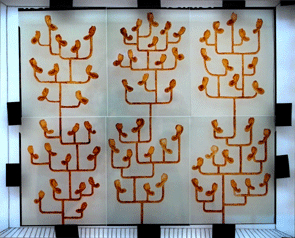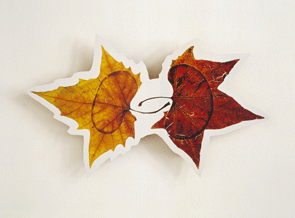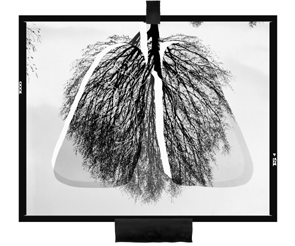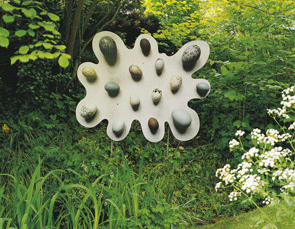andrew carnie
Our most intriguing insights are born out of the clash of cultures
Andrew Carnie
Sunday March 17, 2002
The Observer
Last week in the Review, Lewis Wolpert claimed that a new exhibition bringing together science and art trivialised both. Here, one of the artists in the exhibition has his say.
Art is too important to be left to artists - science too important to be left to scientists. Bringing the two together raises provocative and interesting ideas about fundamental issues on the nature of creativity, the role of education in shaping disciplines and the funding of culture.
As an artist who has recently collaborated with a scientist in preparing work for the Wellcome Trust's Head On exhibition, which has just opened at the Science Museum, I have found the experience an exhilarating one. Partnered by Richard Wingate at the MRC Centre for Developmental Neurology at King's College, London, my exposure to his science has opened my eyes to a different view of the brain. The interaction has born fruit in an artwork inspired by scientific ideas, which nonetheless remains at a more poetic level with its own integrity preserved.
In the longer term, a collaboration like ours promises more thorough artistic participation in the scientific vision. As they gain maturity, we might well see artists spending more time in scientific laboratories, gaining formal scientific training, and maybe even becoming part of research teams, integrated into the scientific research itself. Ironically, for me and a number of other contemporary artists, this would be a return to an earlier part of my education. This is highly speculative, but the programme of science-art collaborations is too early in its life cycle to dismiss out of hand.
My own career development reverses that chosen by Santiago Ramón y Cajal, the Spanish scientist whose historical work I have followed for this exhibition. His early interest in drawing and photography gave way to a career as one of the all-time great neurologists, awarded the Nobel prize in 1906 for his exploration of neurones. What would he have thought of our art-science debate?
The practice of science is not isolated from the world we live in. Science has its politics, its economics, its fashions even. And anecdotally at least, some of the scientists involved in 'sci-art' collaborations report an intellectual engagement in them that goes further than personal enjoyment. It's not just that it allows them to get out of their labs a bit more; it also seems to offer a different way of looking at their own work as scientists. We have all experienced those moments of self-reflective insight brought on by the challenge of explaining to someone outside our natural sphere what it is we do and why.
There is one other player in these debates that we need to remember - the public. Head On and the other exhibitions planned for the Wellcome Trust's new gallery at the Science Museum are meant for a wider audience than artists and scientists, most of whom are pretty unlikely to be familiar with the practices of either. By providing a space in which science and art can rub shoulders, the latent interest in both can be engaged, and this irrespective of whether they are intriguingly similar or profoundly different.
What the public seems more interested in are the ideas and intrigue that emerge from combining the visual interfaces of both cultures: an artist's model of his own mind as a massive 'cabinet of curiosities' and the right hemisphere of Charles Babbage's pickled brain; a set of phrenological skulls and a 'magic forest' of light which conjures up connections between neurones.
Andrew Carnie's work, Magic Forest , is part of Head On: Art with the Brain in Mind at the Science Museum, London SW7, to 28 July
Guardian Unlimited © Guardian Newspapers Limited 2004



